A Spanish Musical Portrait: Llobet, Tárrega, Granados, Albeniz
A Spanish Portrait: Llobet, Tárrega, Granados, Albeniz


Descargar estas y otras muchas más partituras en nuestra biblioteca.
Browse in the Library:
| Artist or Composer / Score name | Cover | List of Contents |
|---|---|---|
| A dozen A Day Book 1 Technical exercises for the piano |
 |
A dozen A Day Book 1 Technical exercises for the piano |
| A dozen A Day Book 2 Technical exercises for the piano |
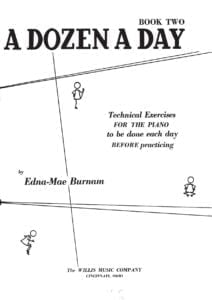 |
|
| A dozen A Day Book 3 Technical exercises for the piano |
 |
|
| A dozen A Day Book 4 Technical exercises for the piano |
 |
|
| A dozen A Day Mini Book Technical exercises for the piano |
 |
|
| A dozen Day Preparatory Book Technical exercises for the piano |
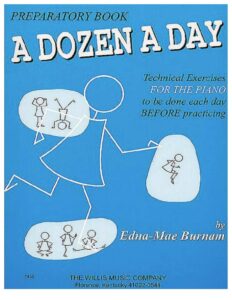 |
|
| A Farewell To Arms Love Theme From A Farewell To Arms film by Mario Nascimbene Francis Webster 1957 |
 |
|
| A Felicidade (Antonio Carlos Jobim) | ||
| A Festival Gathering Of Carols (Musescore File).mscz | ||
| A Fine Frenzy – Almost Lover |
 |
|
| A Fistful of Dollars (Ennio Morricone) | ||
| A Generative Theory Of Tonal Music by Fred Lerdahl and Ray Jackendoff (Book) |
 |
|
| A Guide To Guitar Chords by Curt Sheller |
 |
A Guide To Guitar Chords by Curt Sheller |
| A Guide To Musical Analysis by Nicholas Cook (Book) |
 |
|
| A Handbook Of Piano Playing (By Eric Hope) (1962) |
 |
|
| A Heart Full Of Love (Musescore File).mscz | ||
| A love suicide (Yutaka Minobe) | ||
| A Love Supreme (by Ashley Kahn) The story of john Coltrane’s signature album (Book) |
 |
|
| A Media Luz (Edgardo Donato) | ||
| A Modern Approach To Jazz Rock And Fusion For Guitar with Tablature |
 |
A Modern Approach To Jazz Rock And Fusion For Guitar |
| A Modern Method For Guitar (Berklee) 1 by William Leavitt |
 |
A Modern Method Berklee 1 |
| A Modern Method For Guitar (Berklee) 2 by William Leavitt |
 |
A Modern Method For Guitar (Berklee) 2 |
| A Modern Method For Guitar (Berklee) 3 by William Leavitt |
 |
A Modern Method For Guitar (Berklee) 3 |
| A MOZART REINCARNATED (Ennio Morricone) |
 |
|
| A Mozart Reincarnated by Ennio Morricone (Musescore File).mscz | ||
| A New Approach To Ear Training by Leo Kraft (BOOK) |
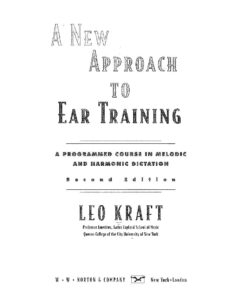 |
|
| A New Approach To Piano Technique (By Ruth A. Dickerson) (1962) |
 |
A new approach to piano technique |
| A Night In Tunisia – Dizzy Gillespie.mscz | ||
| A Pedal Method For The Piano (By Albert F Venino) (1893) |
 |
|
| A Popular Account Of Ancient Musical Instruments And Their Development by William Lynd (Book 1897) |
 |
|
| A Rockin’ Christmas Piano Vocal Guitar |
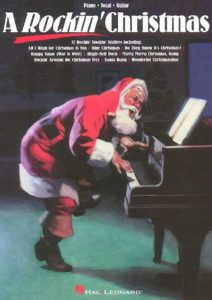 |
A Rockin’ Christmas Piano Vocal Guitar Contents — Rockin Christmas |
| A Single Man – George’s Waltz (Shigeru Umebayashi) | ||
| A Single Man – Stillness of the Mind (Abel Korzeniowski) | ||
| A Smooth Jazz Christmas – Mellow Seasonal Favorites for Piano arr. Roger House |
 |
A Smooth Jazz Christmas – Mellow Seasonal Favorites for Piano arr. Roger House |
| A Song For You – Leon Russell Ray Charles (Musescore File).mscz | ||
| A Star Is Born – Always Remember Us This Way Lady Gaga |
 |
|
| A Star Is Born – Shallow Lady Lady Gaga |
 |
|
| A Tale Of Two Sisters Ost – Epilogue Piano Solo |
 |
|
| A Thousand Years – Twilight OST (Christina Perri) | ||
| A Time For Love – Johnny Mandel |
 |
|
| A Time For Us – Guitar TABlature |
 |
|
| A Time For Us (Love Theme from Romeo and Juliet) Nino Rota |
 |
|
| A Time For Us (Romeo and Juliet OST) Nino Rota | ||
| A Touch Of Jazz 14 well-known hymns, gospel songs and contemporary praise songs by Wolaver Bill |
 |
A Touch Of Jazz 14 well-known hymns, gospel songs and contemporary praise songs by Wolaver Bill |
| A Tribute To Ella Fitzgerald Piano Vocal Guitar |
 |
A tribute to ELLA FITZGERALD |
| A Walk To Remember – Only Hope | ||
| A whiter shade of pale – Procul Harum | A whiter shade of pale – Procul Harum | |
| AaRON U-turn Lili Piano |
 |
|
| Ab Ovo – Joep Beving (Musescore File).mscz | ||
| Abba – Abba Gold – Greatest Hits |
 |
ABBA Gold Geatest Hits booksong sheet music |
| Abba – Chiquitita | ||
| Abba – Dancing Queen | ||
| Abba – Fernando | ||
| Abba – I Have A Dream | ||
| Abba – Like An Angel Passing Through My Room | ||
| Abba – Mamma Mia | ||
| Abba – Slipping Through My Fingers | ||
| Abba – Thank You For The Music | Abba-Thank-You-For-The-Music 1st page | |
| ABBA – Thank You For The Music (Piano Vocal Guitar) | ABBA – Thank You For The Music (Piano Vocal Guitar) | |
| ABBA – Thank You For the Music (Piano vocal Guitar) (Musescore File).mscz | ||
| Abba – Thank You For The Music Piano & vocal | Abba – Thank You For The Music-abba-satb | |
| Abba – The Winner Takes It All | ||
| ABBA Dancing Queen Easy Piano Solo |
 |
|
| ABBA Fernando (Piano Solo arr.) |
 |
|
| ABBA Fernando (Piano Solo arr.).mscz | ||
| ABBA Greatest Hits |
 |
ABBA GREATEST HITS SHEET MUSIC BOOK |
| ABBA I Have A Dream |
 |
|
| Abba The Very Best Vol 1 Easy Piano Hans Gunter Heumann Pop Classics For Piano |
 |
Abba The Very Best Vol 1 Easy Piano |
| Abba The Very Best Vol 2 Easy Piano Hans Gunter Heumann Pop Classics For Piano |
 |
Abba The Very Best Vol 2 Easy Piano |
| Abbey Lincoln Songbook |
 |
Abbey Lincoln Songbook |
| Abbey Lincoln Songbook Piano Vocal Guitar Chords |
 |
Abbey Lincoln Songbook Piano Vocal Guitar Chords |
| Abdullah Ibrahim – The Piano World Of |
 |
Abdullah Ibrahim, The Piano World Of |
| Abdullah Ibrahim The African Piano Of Abdullah Ibrahim Vol 1 |
 |
Abdullah Ibrahim The African Piano Of Abdullah Ibrahim Vol 1 |
| Abdullah Ibrahim The Wedding (piano solo transcription sheet music, partition) |
 |
|
| Abel Korzeniowski – Death Is My Heir (from Romeo and Juliet) |
 |
|
| ABRSM Jazz Piano Pieces Grade 1 to 5 |
 |
ABRSM Jazz Piano Pieces Grade 1 to 5 ABRSM Jazz Piano Pieces Grade 5ABRSM Jazz Piano Pieces Grade 5 |
| ABRSM Piano Exam Pieces Grade 1 (2016) |
 |
ABRSM Piano Exam Pieces Grade 1 (2016) |
| ABRSM Piano Scales, Arpeggios Grade 8 |
 |
|
| ABRSM Piano Scales, Arpeggios and broken chords Grade 1 |
 |
|
| ABRSM Piano Scales, Arpeggios and broken chords Grade 4 |
 |
ABRSM Piano Scales, Arpeggios and broken chords Grade 4 |
| ABRSM Piano Scales, Grade 2 A Guide for Students and Teachers | ABRSM Piano Scales, Grade 2 A Guide for Students and Teachers | |
| ABRSM – Time pieces for guitar vol. 1 |
 |
|
| ABRSM – Time pieces for guitar vol. 2 |
 |
|
| ABRSM 2017 18 Piano Exam Pieces Grade 1 |
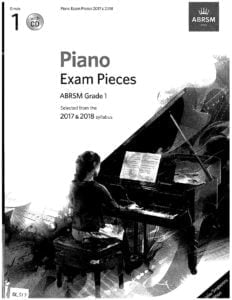 |
ABRSM 2017 18 Piano Exam Pieces Grade 1 |
| ABRSM 2017 18 Piano Exam Pieces Grade 2 |
 |
ABRSM 2017 18 Piano Exam Pieces Grade 2 |
| ABRSM 2017 18 Piano Exam Pieces Grade 3 |
 |
|
| ABRSM 2017 18 Piano Exam Pieces Grade 4 |
 |
|
| ABRSM 2017 18 Piano Exam Pieces Grade 5 |
 |
|
| ABRSM 2017 18 Piano Exam Pieces Grade 6 |
 |
|
| ABRSM 2017 18 Piano Exam Pieces Grade 7 |
 |
|
| ABRSM 2017 18 Piano Exam Pieces Grade 8 |
 |
|
| ABRSM 2021-2022 Piano Exam Pieces Grade 1 |
 |
|
| ABRSM 2021-2022 Piano Exam Pieces Grade 2 |
 |
|
| ABRSM 2021-2022 Piano Exam Pieces Grade 3 |
 |
|
| ABRSM 2021-2022 Piano Exam Pieces Grade 5 |
 |
|
| ABRSM 2021-2022 Piano Exam Pieces Grade 6 |
 |
|
| ABRSM 2021-2022 Piano Exam Pieces Grade 8 |
 |
|
| ABRSM 2021-2022 Piano Exam Pieces Initial Grade |
 |
ABRSM 2021-2022 Piano Exam Pieces Initial Grade |
| ABRSM Aural Training In Practice Book 1 Grades 1 to 3 |
 |
|
| ABRSM Aural Training In Practice Book 2 Grades 4 and 5 |
 |
|
| ABRSM Discovering Music Theory (Complete) Grades 1 to 5 Workbook by Simon Rushby (2020 Exams) |
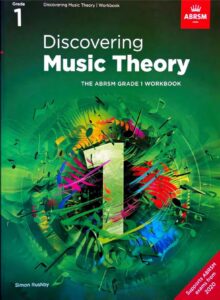 |
ABRSM Discovering Music Theory (Complete) Grades 1 to 5 Workbook by Simon Rushby (2020 Exams) contents |
| ABRSM Erster Verlust Grade 4 ABRSM Piano Exam Pieces 2021 & 2022 |
 |
|
| ABRSM Etude In A Minor – Dmitry Kabalevsky ABRSM Grade 4 Piano Exam Pieces 2021 & 2022 |
 |
|
| ABRSM Grade 2 – Inter-City Stomp byChristopher Norton From Microjazz Collection (Sheet Music) |
 |
|
| ABRSM Initial Grade Piano Exam Pieces 2023 2024 |
 |
|
| ABRSM Minuet and Trio D 41 No 21 – Franz Schubert ABRSM Grade 4 Piano Exam Pieces 2021 & 2022 |
 |
|
| ABRSM More Music Theory Sample Papers Grade 5 For New Format |
 |
|
| ABRSM Music Theory In Practice, Grade 1 (Eric Taylor) |
 |
|
| ABRSM Music Theory In Practice, Grade 2 (Eric Taylor) |
 |
|
| ABRSM Music Theory Past Papers Grade 1 2004 |
 |
|
| ABRSM Music Theory Past Papers Grade 4 2016 |
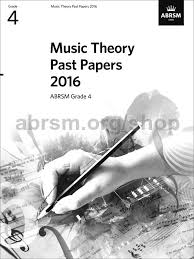 |
|
| ABRSM Music Theory Past Papers Grade 5 2012 |
 |
|
| ABRSM Music Theory Past Papers Grade 6 2013 |
 |
|
| ABRSM Nikki Iles Danny Boy ABRSM Piano Exam Grade 8 2023 Jazz Piano arr. inspired by Bill Evans |
 |
|
| ABRSM Nikki Iles Friends Book 1 Intermediate Jazz Pieces For Piano |
 |
ABRSM Nikki Iles Friends Book 1 Intermediate Jazz Pieces For Piano |
| ABRSM Nikki Iles Friends Book 2 Intermediate To Advanced Jazz Pieces For Piano |
 |
ABRSM Nikki Iles Friends Book 2 Intermediate To Advanced Jazz Pieces For Piano |
| ABRSM Nikki Iles The Elephant Parade ABRSM piano Exam |
 |
|
| ABRSM Piano 2025-2026 Grade 8 C3 A Nightingale Sang in Berkeley Square by Sherwin – Maschwitz |
 |
|
| ABRSM Piano Exam 2007-2008 Grade 3 |
 |
|
| ABRSM Piano Exam 2015-16 Grade 3 |
 |
ABRSM Piano Exam 2015-16 Grade 3 |
Find this guitar sheet music in our Library.
Composer: Enrique Granados, Francisco Tárrega, Isaac Albéniz
Artists: Luigi Attademo historical Torres guitar
A musical portrait of a master guitar-maker of the 19th century. Great instruments have always been associated with great musicians, and this is true in the guitar world too, at least from the early 19th century onwards. Early in his career, Antonio de Torres (1817-1892), like other luthiers before him, found a performer ideally suited to his instruments – the young Andalusian guitarist Julián Arcas.
The technical innovations in construction and timbre pioneered by Torres enabled Arcas to give full expression to his artistry in works such as the florid Fantasía sobre El paño o sea Punto de La Habana with which Luigi Attademo opens this new studio album.
Tracklist:
00:00:00 Fantasía sobre el paño o sea punto de la Habana 00:05:23 El delirio 00:09:46 Adelita in E Minor 00:11:11 Sueño 00:12:47 Mazurka en sol 00:15:13 Marieta 00:17:13 Danza española No. 5 “Andaluza” 00:22:06 Preludio No. 5 in E Major
00:23:43 Preludio No. 2 in A Minor 00:25:46 Preludio No. 1 in D Minor 00:27:10 Endecha y oremus 00:28:11 Leyenda 00:36:02 12 Piezas características, Op. 92: XII. Torre bermeja, serenata 00:40:49 Cançó del lladre 00:42:20 El testament d’Amelia in D Minor 00:44:06 Lo fill del rei 00:45:47 Plany 00:47:45 Variaciones sobre un tema de Sor
Music of Spain
The music of Spain has a long history. It has played an important role in the development of Western music, and has greatly influenced Latin American music. Spanish music is often associated with traditional styles such as flamenco and classical guitar. While these forms of music are common, there are many different traditional musical and dance styles across the regions.
For example, music from the north-west regions is heavily reliant on bagpipes, the jota is widespread in the centre and north of the country, and flamenco originated in the south. Spanish music played a notable part in the early developments of western classical music, from the 15th through the early 17th century.
The breadth of musical innovation can be seen in composers like Tomás Luis de Victoria, styles like the zarzuela of Spanish opera, the ballet of Manuel de Falla, and the classical guitar music of Francisco Tárrega. Nowadays commercial pop music dominates.
Origins of the music of Spain

Musical instruments in the Diocesan Museum of Albarracín.
The Iberian peninsula has had a history of receiving different musical influences from around the Mediterranean Sea and across Europe. In the two centuries before the Christian era, Roman rule brought with it the music and ideas of Ancient Greece; early Christians, who had their own differing versions of church music arrived during the height of the Roman Empire; the Visigoths, a Romanized Germanic people, who took control of the peninsula following the fall of the Roman Empire; the Moors and Jews in the Middle Ages. Hence, there have been more than two thousand years of internal and external influences and developments that have produced a large number of unique musical traditions.
Medieval period

Cantigas de Santa maría, medieval Spain
Isidore of Seville wrote about the local music in the 6th century. His influences were predominantly Greek, and yet he was an original thinker, and recorded some of the first details about the early music of the Christian church. He perhaps is most famous in musical history for declaring that it was not possible to notate sounds, an assertion which revealed his ignorance of the notational system of ancient Greece, suggesting that this knowledge had been lost with the fall of the Roman Empire in the west.

Codex Las Huelgas, a medieval Spanish music manuscript, circa 1300 AD.
The Moors of Al-Andalus were usually relatively tolerant of Christianity and Judaism, especially during the first three centuries of their long presence in the Iberian peninsula, during which Christian and Jewish music continued to flourish. Music notation was developed in Spain as early as the 8th century (the so-called Visigothic neumes) to notate the chant and other sacred music of the Christian church, but this obscure notation has not yet been deciphered by scholars, and exists only in small fragments.
The music of the early medieval Christian church in Spain is known, misleadingly, as the “Mozarabic Chant“, which developed in isolation prior to the Islamic invasion and was not subject to the Papacy’s enforcement of the Gregorian chant as the standard around the time of Charlemagne, by which time the Muslim armies had conquered most of the Iberian peninsula.
As the Christian reconquista progressed, these chants were almost entirely replaced by the Gregorian standard, once Rome had regained control of the Iberian churches. The style of Spanish popular songs of the time is presumed to have been heavily influenced by the music of the Moors, especially in the south, but as much of the country still spoke various Latin dialects while under Moorish rule (known today as the Mozarabic) earlier musical folk styles from the pre-Islamic period continued in the countryside where most of the population lived, in the same way as the Mozarabic Chant continued to flourish in the churches.
In the royal Christian courts of the reconquistors, music like the Cantigas de Santa Maria, also reflected Moorish influences. Other important medieval sources include the Codex Calixtinus collection from Santiago de Compostela and the Codex Las Huelgas from Burgos. The so-called Llibre Vermell de Montserrat (red book) is an important devotional collection from the 14th century.
Renaissance and Baroque periods

Orpheus playing the vihuela. Frontispiece from the famous work El maestro by Luis de Milán, 1536.
In the early Renaissance, Mateo Flecha el Viejo and the Castilian dramatist Juan del Encina ranked among the main composers in the post-Ars Nova period. Renaissance song books included the Cancionero de Palacio, the Cancionero de Medinaceli, the Cancionero de Upsala (kept in Carolina Rediviva library), the Cancionero de la Colombina, and the later Cancionero de la Sablonara. The organist Antonio de Cabezón stands out for his keyboard compositions and mastery.
An early 16th-century polyphonic vocal style developed in Spain was closely related to that of the Franco-Flemish composers. Merging of these styles occurred during the period when the Holy Roman Empire and the Burgundy were part of the dominions under Charles I (king of Spain from 1516 to 1556), since composers from the North of Europe visited Spain, and native Spaniards traveled within the empire, which extended to the Netherlands, Germany and Italy.
Music composed for the vihuela by Luis de Milán, Alonso Mudarra and Luis de Narváez was one of the main achievements of the period. The Aragonese Gaspar Sanz authored the first learning method for guitar. Spanish composers of the Renaissance included Francisco Guerrero, Cristóbal de Morales, and Tomás Luis de Victoria (late Renaissance period), all of whom spent a significant portion of their careers in Rome.
The latter was said to have reached a level of polyphonic perfection and expressive intensity equal or even superior to Palestrina and Lassus[citation needed]. Most Spanish composers returned home from travels abroad late in their careers to spread their musical knowledge in their native land, or in the late 16th century to serve at the Court of Philip II.
18th to 20th centuries

By the end of the 17th century the “classical” musical culture of Spain was in decline, and was to remain that way until the 19th century. Classicism in Spain, when it arrived, was inspired by Italian models, as in the works of Antonio Soler. Some outstanding Italian composers such as Domenico Scarlatti and Luigi Boccherini were appointed to the Madrid royal court. The short-lived Juan Crisóstomo Arriaga is credited as the main beginner of Romantic sinfonism in Spain.[citation needed]
Massiel She won the Eurovision Song Contest 1968 with the song “La, la, la“, beating the British pop singer Cliff Richard‘s “Congratulations“.
Although symphonic music was never too important in Spain, chamber, solo instrumental (mainly guitar and piano) vocal and opera (both traditional opera, and the Spanish version of the singspiel) music was written by local composers. Zarzuela, a native form of opera that includes spoken dialogue, is a secular musical genre which developed in the mid-17th century, flourishing most importantly in the century after 1850.
Francisco Asenjo Barbieri was a key figure in the development of the romantic zarzuela; whilst later composers such as Ruperto Chapí, Federico Chueca and Tomás Bretón brought the genre to its late 19th-century apogee. Leading 20th-century zarzuela composers included Pablo Sorozábal and Federico Moreno Torroba.
Fernando Sor, Dionisio Aguado, Francisco Tárrega and Miguel Llobet are known as composers of guitar music. Fine literature for violin was created by Pablo Sarasate and Jesús de Monasterio.
Musical creativity mainly moved into areas of popular music until the nationalist revival of the late Romantic era. Spanish composers of this period included Felipe Pedrell, Isaac Albéniz, Enrique Granados, Joaquín Turina, Manuel de Falla, Jesús Guridi, Ernesto Halffter, Federico Mompou, Salvador Bacarisse, and Joaquín Rodrigo.
